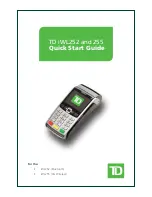
ST 9100 - INSTALLATION GUIDE
Note:
ORBCOMM recommends that if possible, wait until the terminal is unblocked (has a full view of the sky)
before powering on the transceiver.
1. Locate the main power input and the ground (GND) wires using the connector pin out table (
).
You can connect the transceiver ground to ground in the fuse panel or to chassis ground. To do this, secure
the ground wire on the cable assembly to a piece of metal electrically connected to the vehicle chassis using a
sheet metal screw.
2. Ensure that the main power input and ground wires reach the vehicle fuse panel.
If the wires are not long enough, splice similar gauge wires to the main power input and ground wires so that
they reach the fuse panel. Cover any splices with adhesive lined heat shrink.
3. Correctly mate connectors before applying power.
4. Connect the ground wire to the grounding point selected in an earlier step. Check that the polarity is correct,
and the voltage source is 9-32 VDC.
5. Connect the main power input wire to the unswitched vehicle power source within the fuse panel.
6. Loop and secure any excess cabling.
If your application requires extended cable lengths, it is necessary to calculate the cable voltage drop to determine if
the transceiver is receiving at least 9 V (with 1.7 A draw). Large cable voltage drops might adversely affect transceiver
operation.
1.7.1 CAN bus Connection
It is recommended that you do not connect directly to the CAN bus wires on the installation vehicle. Cutting or
damaging those wires might void the warranty on the vehicle.
To connect the transceiver CAN bus serial interface to the CAN bus of the vehicle, ORBCOMM recommends using a
J1962 (OBDII) connector or an induction sensor, which allows the transceiver CAN bus interface to read information
from the CAN bus without damaging the vehicle wires. An example of this type of sensor is the CANGOclick. Refer to
http://www.cango.ro/index.php/en/product/10/cangoclick.html
for more information on the CANGOclick.
1.8 (Optional) Attach the Terminal Shroud
The optional terminal shroud protects the cable connectors that connect to the transceiver. It protects the transceiver
from solar loading (that is, provides shade) when mounted outside.
T414, Version 0.04 BETA
© ORBCOMM
®
Proprietary
24















































